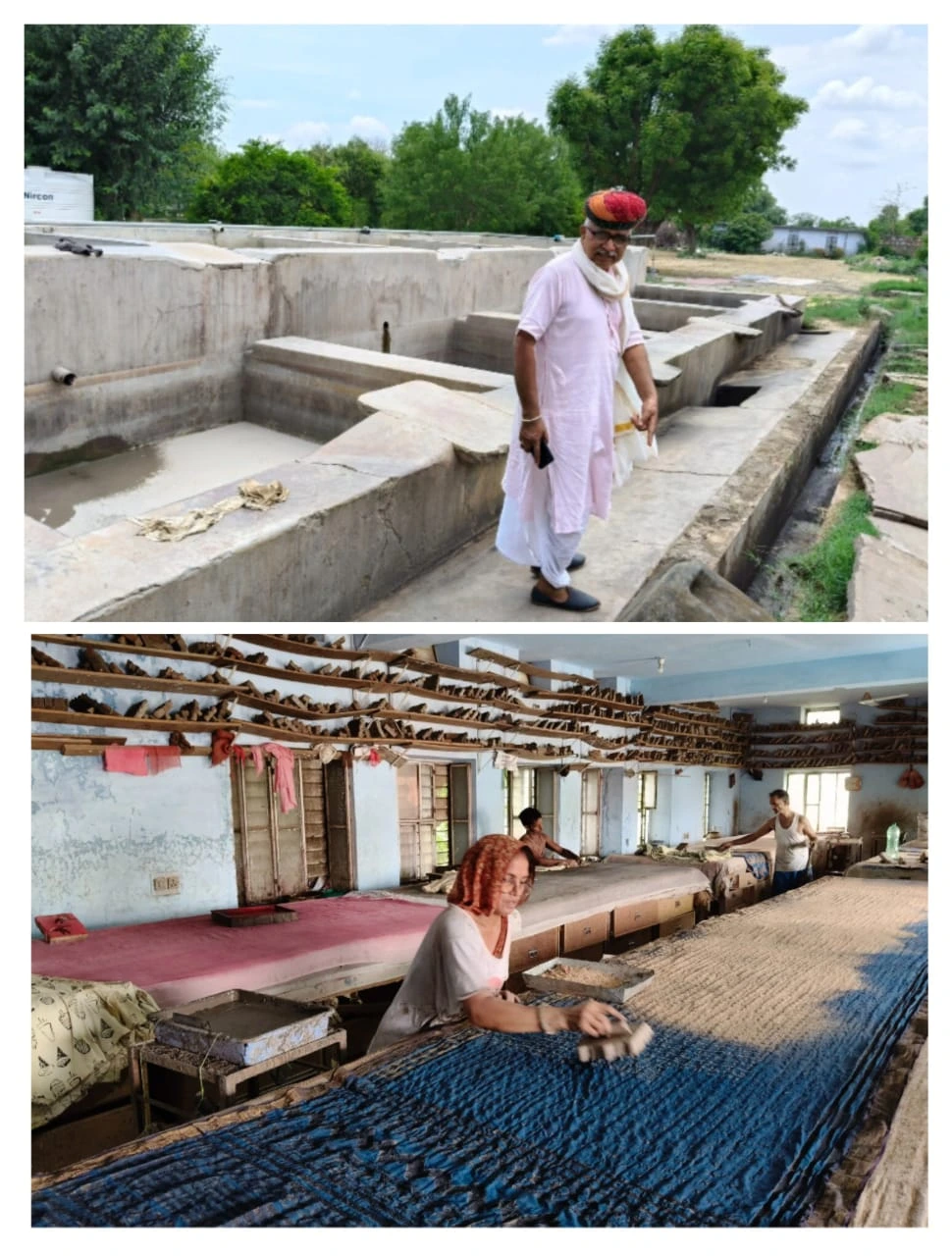Tie-dye work is extremely popular in Rajasthan and Gujarat and has high demand and consumers across the globe. As per FY 2024–25 data from the Department of Commerce (Textiles & Apparel exports of Rajasthan), export business amounts to ₹8,820 crore.
However popular and profitable tie-dye may be, the process leads to large quantities of water wastage, often with serious environmental consequences. To curb this wastage, 62-year-old Teja Ram Mali, who hails from Ajmer district, Rajasthan, designed a structure that helps in groundwater recharge through a water recycling system.
The solution Teja Ram suggested channels all the wastewater from the printing units to a soak pit after putting it through a few stages of filtration—two to three smaller tanks in sequence—where the water flows from one to the next, allowing time to settle in each tank and leaving the mud behind. This pit can also be used to collect rainwater from neighbouring roofs.
This project was implemented in Kaladera village in Chomu, Rajasthan, which is home to about 80–100 traditional printer families (Chhipa community), most of whom earn their livelihood solely through printing.
Kaladera has 12 units, and around 20,000 litres of water was wasted per day in each unit, totalling approximately 8.64 crore litres annually. After the project was implemented in one unit, 10 lakh litres of water was conserved yearly from that unit alone. This water is now being used for multiple purposes—drinking, washing, dyeing, farming, gardening, and groundwater recharge.
The owner of the unit where the project was implemented, Krishnakumar Dosaya, shared that the groundwater table had depleted severely, and he felt responsible. However, after implementing the project, he is happy that his unit is now able to stop the wastage of 20,000 litres of water per day.
“We are using our natural resource—that is, water—so we should give back to the ground as well. I am hoping that such an initiative can be replicated in other units too.”
Adding to Dosaya’s remarks, Teja Ram Mali, the man behind the water recycling system, shared that the structure isn’t very costly, and once built, it will be useful for decades and save millions of litres of water. In the current situation where water scarcity is a major issue, this project becomes even more essential—especially in the tie-dye industry, where a huge amount of water is wasted.
He added that, besides the tie-dye unit where the model was implemented, the model was also tried at the community level, where people were expected to use a common structure. However, that wasn’t a major success, as community participation is crucial for such a model to work.


